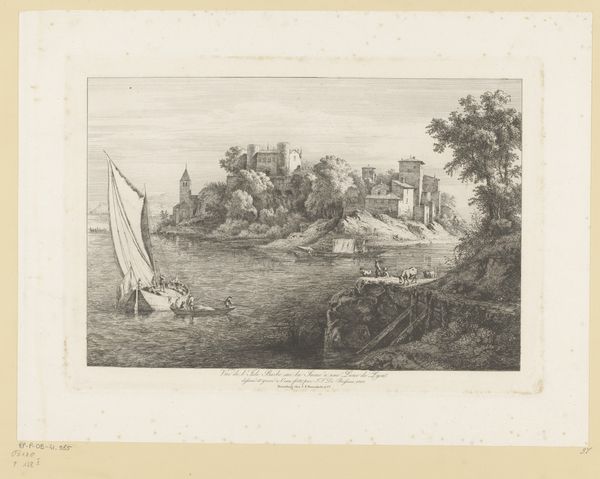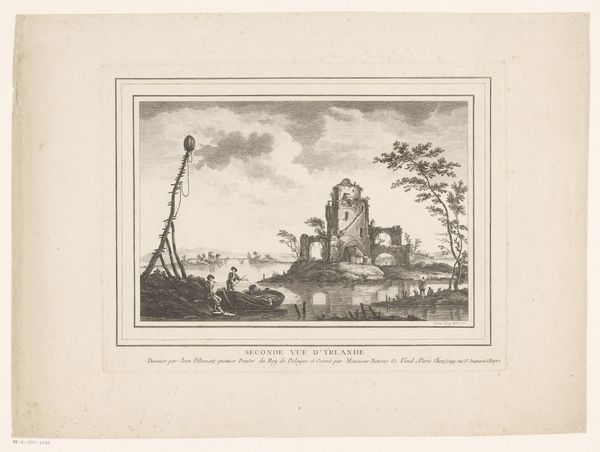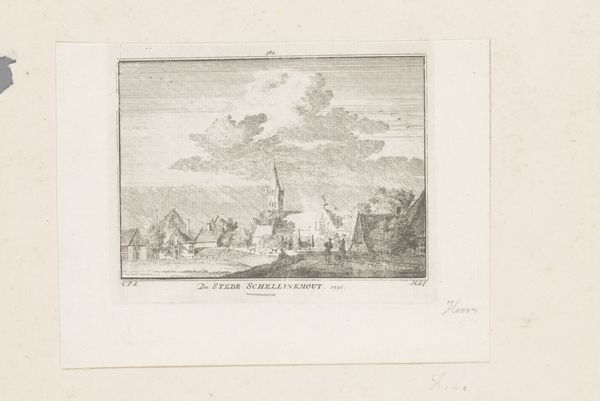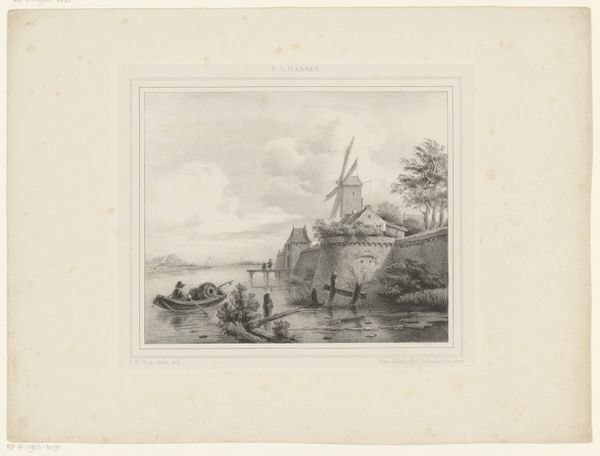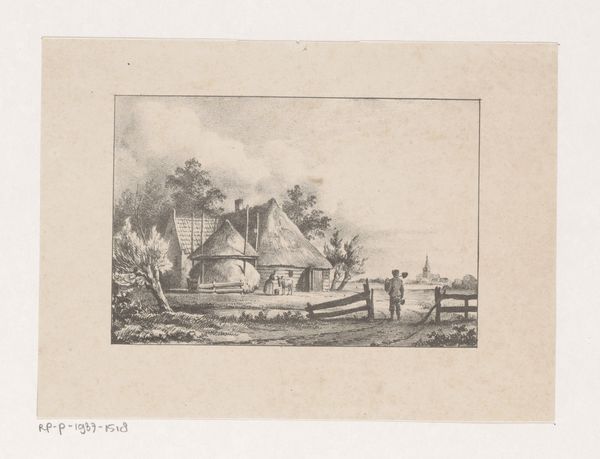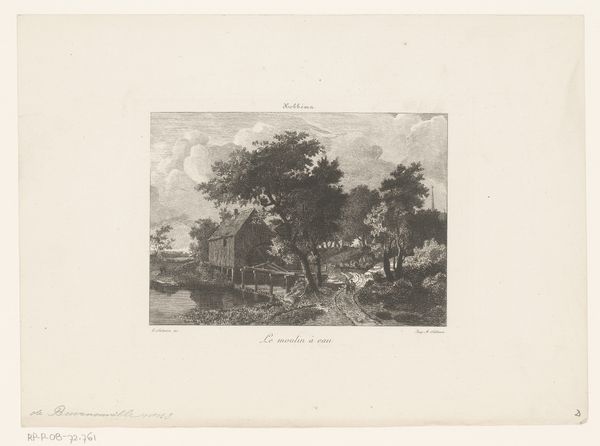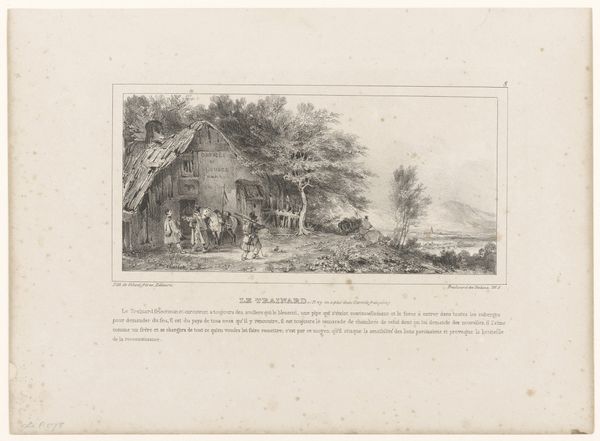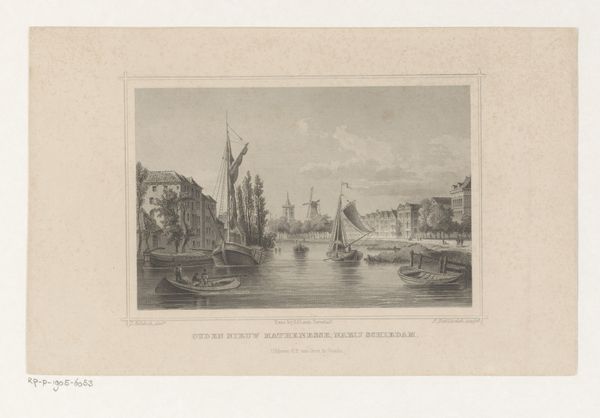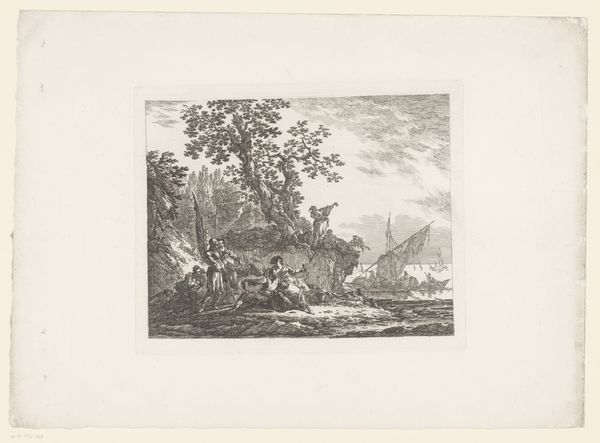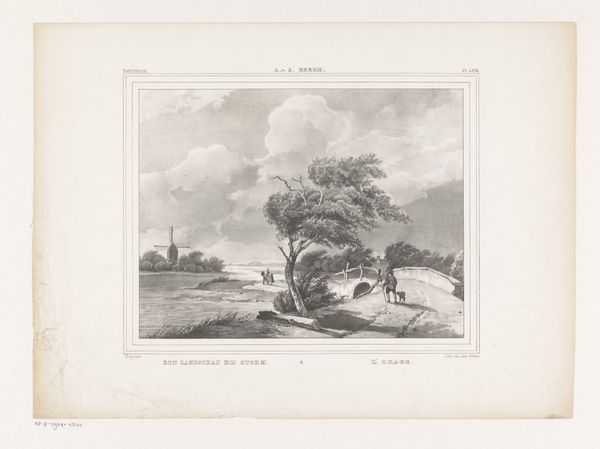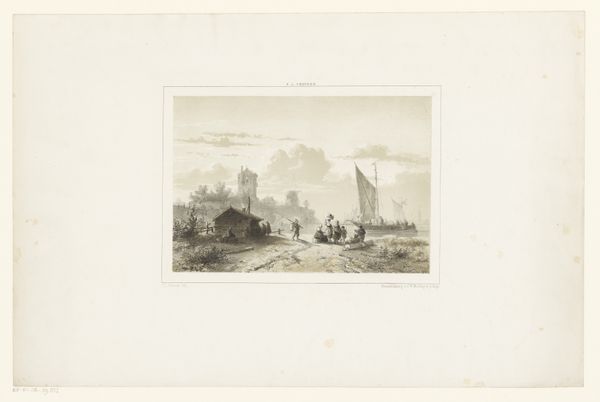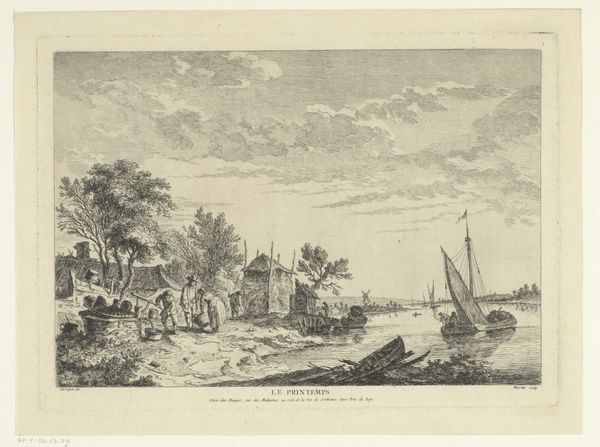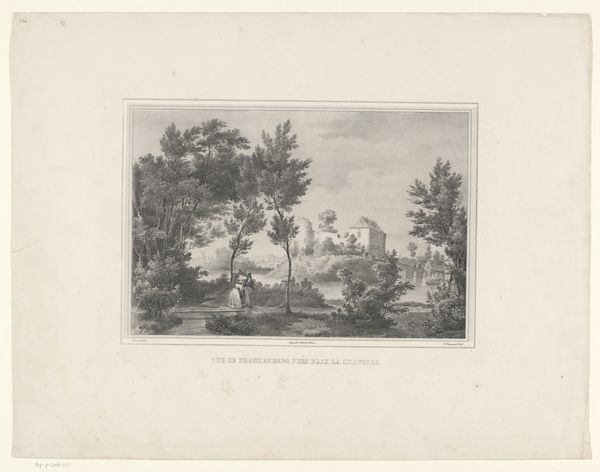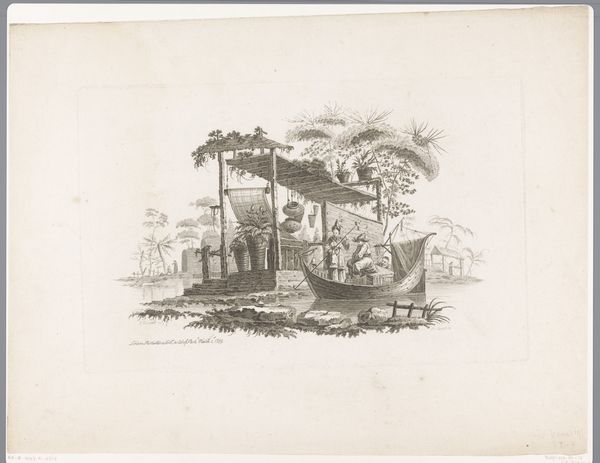
print, engraving
# print
#
landscape
#
classical-realism
#
engraving
Dimensions: height 287 mm, width 380 mm
Copyright: Rijks Museum: Open Domain
Editor: So, this print, “Oever met huis en boten,” made sometime between 1746 and 1787 by Marguerite Thérèse Maugin-Delaunay... it’s interesting. There's a boatload, no pun intended, of subtle detail in a fairly muted landscape. What do you see in it? Curator: It feels like a coded snapshot of a specific yearning. Note the prominence of water—often, that symbolizes the subconscious, the flowing nature of time and memory. Observe also the ruins, their quiet resilience echoing human fragility, yet persistent memory. Do you notice any potential psychological implications? Editor: I see the ruins as more picturesque than foreboding, especially paired with the figures in the boat who seem relaxed. It's not somber, but still a bit...reflective? Curator: Precisely. It's an embrace of a melancholic past viewed from the vessel of the present. The artist positions the past—the ruins—as foundational to the present moment, implying the past always subtly steers us, even when the future is our destination. Consider the visual weight given to naturalistic motifs in the foreground. What meaning can you gather from these aesthetic considerations? Editor: The framing seems to put nature between us and these people from the past... Maybe they’re more like symbols, archetypes, and that removes any immediate tension. I hadn’t thought about how that changes my own perception. Curator: And the use of the engraving medium, itself an echo of precise labor, reinforces the meticulous and perhaps idealised re-presentation of place. Editor: That's really fascinating, thanks! I definitely see more now.
Comments
No comments
Be the first to comment and join the conversation on the ultimate creative platform.
